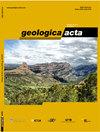New palaeobotanical data from Carboniferous Culm deposits constrain the age of the Variscan deformation in the eastern Pyrenees
IF 2
4区 地球科学
Q2 GEOLOGY
引用次数: 7
Abstract
The pre-Variscan rocks of the Pyrenees exhibit a polyphase deformation linked to the Variscan crustal shortening and a low-pressure–high-temperature metamorphism. However, there is scarce chronostratigraphic evidence of this Variscan deformation. In the Pyrenean low-grade metamorphic domains, maximum ages have been provided by the synorogenic Carboniferous Culm deposits. In medium- to high-grade metamorphic areas, the Variscan regional metamorphism or intrusive magmatic bodies constrain the age of the main Variscan deformation structures. However, these data usually provide a minimum age. Here, we present new palaeobotanical records that assign a Namurian age to the base of the Culm deposits of la Cerdanya in the eastern Pyrenees. This dating is based on the co-occurrence of the sphenopsids Archaeocalamites radiatus , Mesocalamites cistiiformis and the seed of Cardiocarpus sp. The plant remains were found in sandstone facies produced by high-density turbidity flows of a deep-sea fan system. The new biostratigraphic information constrains the age of the Carboniferous Culm succession in the eastern Pyrenees.石炭纪卡尔姆矿床的新古植物学数据限制了比利牛斯山东部华力西变形的年龄
比利牛斯山脉的前华力西期岩石表现出与华力西地壳缩短和低压-高温变质作用有关的多相变形。然而,缺乏这种华力西变形的年代地层证据。在比利牛斯低级变质域中,同造山期石炭系卡尔姆矿床提供了最大年龄。在中高级变质区,华力西区域变质作用或侵入岩浆体限制了华力西主要变形构造的年龄。然而,这些数据通常提供了最低年龄。在这里,我们提供了新的古植物学记录,这些记录将纳莫里亚时代确定为比利牛斯山脉东部la Cerdanya的Culm矿床的基底。这一定年是基于辐射球藻、池状中炉甘石和Cardiocarpus sp.种子的共生。植物遗骸是在深海扇系高密度浊流产生的砂岩相中发现的。新的生物地层学信息限制了东比利牛斯石炭纪-卡尔姆序列的年龄。
本文章由计算机程序翻译,如有差异,请以英文原文为准。
求助全文
约1分钟内获得全文
求助全文
来源期刊

Geologica Acta
地学-地质学
CiteScore
2.50
自引率
6.70%
发文量
13
审稿时长
>12 weeks
期刊介绍:
- Relevant conceptual developments in any area of the Earth Sciences.
- Studies presenting regional synthesis.
- Thematic issues or monographic volumes presenting the results from one or more research groups.
- Short papers reflecting interesting results or works in progress.
- Contributions and results from Research Projects, Workshops, Symposiums, Congresses and any relevant scientific activity related to Earth Sciences.
- Geologica Acta aims to stimulate rapid diffusion of results and efficient exchange of ideas between the widespread communities of Earth Science researchers (with special emphasis on Latinamerica, the Caribbean, Europe, the Mediterranean
 求助内容:
求助内容: 应助结果提醒方式:
应助结果提醒方式:


